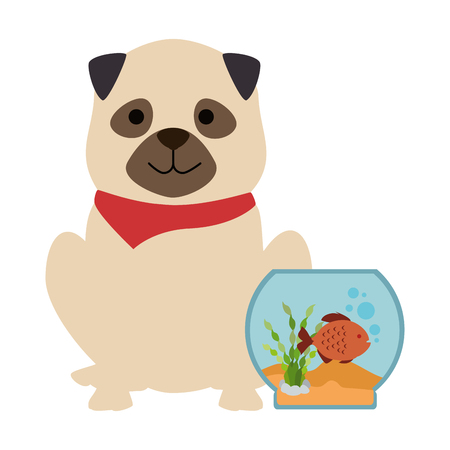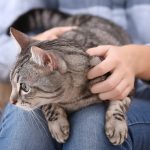1. Nutrition: Feeding Your Cat for Optimal Health
Providing your cat with a well-balanced diet is essential for their overall health and happiness. Cats are obligate carnivores, meaning they require animal-based proteins to thrive. Choosing the right food, understanding protein sources, and ensuring proper hydration are key factors in maintaining your feline friend’s well-being.
Understanding Your Cat’s Dietary Needs
Cats need a diet rich in high-quality protein, moderate fats, and minimal carbohydrates. Unlike humans or dogs, they cannot synthesize certain essential nutrients on their own, such as taurine, which is crucial for heart and eye health.
Protein Sources: What’s Best for Your Cat?
Since protein is the foundation of a cat’s diet, selecting the right source is important. Here are some common protein sources found in cat food:
| Protein Source | Benefits |
|---|---|
| Chicken | Lean protein that supports muscle growth and maintenance. |
| Fish (like Salmon) | Packed with omega-3 fatty acids that promote healthy skin and coat. |
| Beef | A good source of iron and essential amino acids. |
| Tuna | Tasty but should be given in moderation due to mercury concerns. |
| Lamb | Easily digestible for some cats with food sensitivities. |
Wet vs. Dry Food: Which Is Better?
Cats can eat both wet and dry food, but each type has its own advantages:
| Food Type | Pros | Cons |
|---|---|---|
| Wet Food | – Higher moisture content helps with hydration. – Often more palatable for picky eaters. – Lower in carbohydrates. |
– Can be more expensive than dry food. – Shorter shelf life once opened. |
| Dry Food | – Convenient and easy to store. – Can help with dental health by reducing plaque buildup. – More affordable than wet food. |
– Lower moisture content may contribute to dehydration. – Some brands contain higher amounts of carbohydrates. |
The Importance of Hydration
Cats naturally have a low thirst drive because their ancestors got most of their water from prey. If they don’t consume enough water, they can develop urinary tract issues or kidney problems. Here’s how you can encourage proper hydration:
- Add Wet Food: Incorporating wet food into their diet increases moisture intake.
- Provide Fresh Water: Always keep fresh, clean water available in multiple locations around the house.
- Use a Water Fountain: Many cats prefer running water over stagnant bowls.
- Add Water to Dry Food: Mixing a little water into kibble can help increase fluid intake.
Avoiding Harmful Foods
Certain foods can be toxic or harmful to cats. Avoid feeding them onions, garlic, chocolate, grapes, raisins, dairy products (many cats are lactose intolerant), and any food seasoned with salt or spices.
A well-balanced diet plays a crucial role in keeping your cat healthy and happy. By choosing high-quality protein sources, balancing wet and dry food, and ensuring proper hydration, you’re setting your furry friend up for a long and healthy life.
2. Veterinary Care: Preventative Health and Regular Checkups
Taking your cat to the vet regularly is one of the best ways to ensure they live a long, happy, and healthy life. Routine veterinary care helps detect health issues early, prevents diseases through vaccinations, and keeps parasites at bay. Lets go over why regular vet visits are essential and what you can do to keep your feline friend in top shape.
Why Routine Vet Visits Matter
Cats are experts at hiding discomfort and illness, which is why regular checkups are crucial. Your veterinarian can spot early signs of disease before they become serious problems. A typical vet visit includes a physical exam, weight check, dental evaluation, and discussions about diet and behavior.
Essential Vaccinations
Vaccines protect your cat from potentially deadly diseases. Your vet will recommend a vaccination schedule based on your cat’s age, lifestyle, and risk factors.
| Vaccine | Purpose | Recommended For |
|---|---|---|
| Rabies | Prevents fatal viral infection | All cats (required by law in most areas) |
| FVRCP (Feline Viral Rhinotracheitis, Calicivirus, Panleukopenia) | Protects against respiratory infections and feline distemper | All cats |
| FeLV (Feline Leukemia Virus) | Prevents a contagious virus affecting the immune system | Outdoor cats or multi-cat households |
Parasite Prevention
Parasites like fleas, ticks, and worms can cause serious health issues for cats. Even indoor cats are at risk, as pests can be brought inside on clothing or other pets.
- Fleas: Can cause itching, allergies, and even anemia.
- Ticks: May transmit dangerous diseases.
- Heartworms: Though rare in cats, they can be fatal with no cure available.
- Intestinal Worms: Roundworms and hookworms can affect digestion and overall health.
Your vet will recommend monthly preventatives to keep these parasites under control.
Early Disease Detection Saves Lives
Catching health problems early gives your cat the best chance at effective treatment. Common conditions like kidney disease, diabetes, and hyperthyroidism can be managed if detected soon enough. Blood tests, urine analysis, and dental exams help identify potential issues before symptoms become severe.
Signs That Warrant an Immediate Vet Visit
- Lack of appetite for more than 24 hours
- Sudden weight loss or gain
- Lethargy or hiding more than usual
- Vomiting or diarrhea lasting more than a day
- Trouble breathing or persistent coughing
- Excessive thirst or urination
- Changes in grooming habits or fur condition
Your cat depends on you to keep them healthy. By scheduling routine vet visits and staying on top of preventative care, youre giving them the best possible chance at a long and happy life.

3. Enrichment: Keeping Your Cat Mentally and Physically Stimulated
Cats are naturally curious and active creatures. Without proper enrichment, they can become bored, which may lead to destructive behavior or even health issues like obesity. Providing the right toys, scratching posts, and interactive playtime is essential for keeping your cat happy and engaged.
The Importance of Playtime
Regular play sessions help your cat stay physically active and mentally sharp. Interactive play also strengthens the bond between you and your feline friend. Try using different types of toys to keep things exciting.
Types of Toys Your Cat Will Love
| Type of Toy | Benefits | Examples |
|---|---|---|
| Interactive Toys | Encourages exercise and mental stimulation | Laser pointers, feather wands, robotic mice |
| Puzzle Toys | Makes your cat work for treats, preventing boredom | Treat-dispensing balls, food puzzles |
| Chase & Pounce Toys | Satisfies hunting instincts and provides physical activity | Squeaky mice, rolling balls with bells |
| Soft Plush Toys | Mimics prey for cats that love to carry or “kill” their toys | Stuffed animals with catnip, small plush mice |
The Role of Scratching Posts
Cats need to scratch—it helps them stretch their muscles, sharpen their claws, and mark their territory. Without a proper scratching post, they might turn to furniture instead.
Selecting the Right Scratching Post
- Material: Sisal fabric is the best choice as it mimics tree bark.
- Height: A tall post allows your cat to fully stretch while scratching.
- Stability: Ensure the post is sturdy so it won’t tip over.
- Diversity: Some cats prefer horizontal scratchers over vertical ones.
The Benefits of Interactive Play
Cats thrive on engagement. Playing together not only gives them exercise but also helps reduce stress and anxiety. Try scheduling at least two short play sessions daily.
Tips for Effective Playtime
- Mimic Prey Movements: Move toys like a small animal would—erratic motions work best.
- Avoid Hands as Toys: This prevents accidental biting or scratching.
- Create a Routine: Cats love predictability; playing at the same time each day helps build anticipation.
- Add Variety: Rotate toys every few days to keep your cat interested.
A well-stimulated cat is a happy cat! By providing a mix of engaging toys, scratching options, and interactive playtime, you’ll prevent boredom while keeping your feline friend healthy and content.
4. Litter Box Maintenance: Ensuring a Clean and Stress-Free Environment
Keeping your cat’s litter box clean is essential for their health and happiness. A well-maintained litter box prevents odors, reduces stress, and encourages proper bathroom habits. Below, we’ll cover how to choose the right litter, cleaning techniques, and solutions to common litter box issues.
Choosing the Right Litter
Not all cat litter is created equal. Cats can be picky, so selecting the right type ensures they use the box consistently. Here are some common types of litter:
| Type | Pros | Cons |
|---|---|---|
| Clumping Clay | Easy to scoop, good odor control | Dusty, not biodegradable |
| Non-Clumping Clay | Absorbs moisture well | Needs frequent full changes |
| Pine/Wood Pellets | Natural scent, eco-friendly | May not clump well, some cats dislike texture |
| Silica Gel Crystals | Excellent odor control, low dust | Expensive, some cats dislike texture |
| Recycled Paper | Dust-free, biodegradable | Poor odor control, needs frequent changing |
Litter Box Cleaning Techniques
Daily Maintenance
- Scoop out waste at least once or twice a day.
- Add fresh litter as needed to maintain depth.
- Dispose of waste in a sealed bag to reduce odor.
Weekly Deep Cleaning
- Empty the entire box and wash it with mild soap and warm water.
- Avoid strong chemicals that may deter your cat from using the box.
- Dry thoroughly before refilling with fresh litter.
Common Litter Box Issues & Solutions
Your Cat Is Avoiding the Litter Box
If your cat stops using their litter box, consider these possible reasons:
- The box is too dirty: Scoop more frequently and deep clean weekly.
- Litter type is unappealing: Try switching to a different texture or scent-free option.
- Placement issues: Ensure the litter box is in a quiet and accessible location.
- Might be a health problem: If issues persist, consult your vet for possible medical concerns.
Your Home Smells Like Litter Box Odors
No one wants their home smelling like a litter box. Here’s how to keep it fresh:
- Use an odor-controlling litter: Clumping clay or silica gel are great options.
- Add baking soda: A small sprinkle can help neutralize smells.
- Proper ventilation: Keep the area well-ventilated to reduce lingering odors.
- Cleansing frequency: Don’t let waste sit for too long—scoop daily!
Your Cat Kicks Litter Everywhere
If your cat tends to scatter litter outside the box, try these solutions:
- Use a high-sided or covered litter box: This helps contain the mess.
- Add a litter mat: Place one around the box to trap stray litter before it spreads.
- Avoid overfilling: Keeping litter at an appropriate depth (about 2-3 inches) can prevent excessive digging.
A clean and well-maintained litter box ensures your cat stays happy and stress-free while keeping your home fresh. By choosing the right litter, sticking to a regular cleaning routine, and addressing any issues early on, you can create a comfortable environment for both you and your feline friend.
5. Understanding Feline Behavior: Strengthening the Human-Cat Relationship
Cats have unique ways of communicating their needs and emotions. By understanding your cat’s body language, vocalizations, and social behaviors, you can build a stronger bond and prevent common behavior issues like scratching or aggression.
Decoding Your Cat’s Body Language
Your cats body posture, tail position, and facial expressions can tell you a lot about how they’re feeling. Here’s a quick guide to common feline body language:
| Body Language | Meaning |
|---|---|
| Purring with relaxed body | Your cat is content and comfortable. |
| Ears flattened, dilated pupils | Your cat is scared or defensive. |
| Twitching tail | Your cat might be irritated or excited. |
| Belly up but tense body | This is not always an invitation to pet—your cat may feel vulnerable. |
| Straight-up tail with slight curl at the tip | A sign of friendliness and confidence. |
Understanding Cat Vocalizations
Cats use different sounds to express themselves. Recognizing these vocal cues can help you meet your cat’s needs more effectively.
- Purring: Usually a sign of happiness, but sometimes used for self-soothing when sick or stressed.
- Meowing: Cats meow primarily to communicate with humans. Frequent meows may mean they want attention or food.
- Chirping or Trilling: Often used by mother cats to call kittens; cats also use this sound to greet their owners.
- Hissing or Growling: Indicates fear, aggression, or discomfort—give your cat space if they make these sounds.
- Caterwauling: A loud yowl that may indicate distress, mating calls, or territorial behavior.
Your Cat’s Social Needs and How to Meet Them
Cats are often seen as independent animals, but they still need social interaction and mental stimulation. Meeting these needs can reduce unwanted behaviors like excessive scratching or aggression.
The Importance of Playtime
Cats have natural hunting instincts that need to be satisfied through play. Try interactive toys like feather wands or laser pointers to keep them engaged.
The Right Kind of Attention
Some cats enjoy being cuddled, while others prefer affection on their own terms. Pay attention to their cues and respect their boundaries.
A Safe Environment
Create a stress-free home by providing hiding spots, scratching posts, and perches. This allows your cat to feel secure and reduces anxiety-driven behaviors.
Troubleshooting Common Behavior Problems
- If your cat scratches furniture: Provide scratching posts in different areas of your home and use deterrent sprays on furniture.
- If your cat shows aggression: Identify triggers like loud noises or sudden movements and create a calm environment.
- If your cat avoids the litter box: Ensure the litter box is clean, placed in a quiet location, and use a litter type your cat prefers.
The better you understand your cats behavior, the stronger your relationship will be. By decoding their signals and meeting their social needs, you’ll create a happy and trusting environment for both you and your feline friend.


